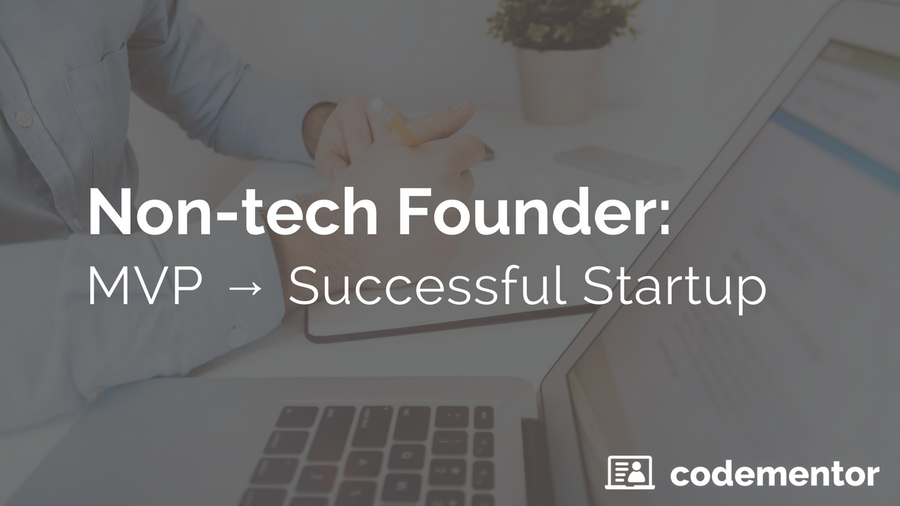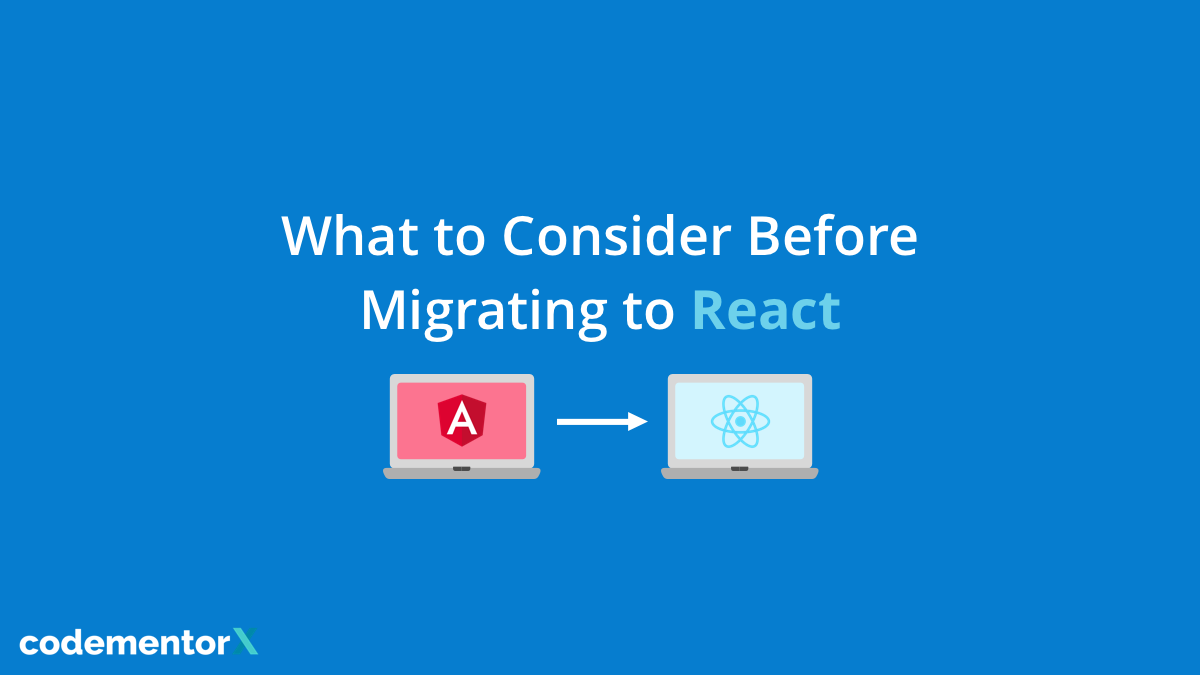After launching a product, every tech startup is met with one really big question:
Which features do we prioritize now?
Do you focus on what drives more immediate revenue? Long-term customer engagement? What the board wants?
Or do you simply follow your gut?
We recently spoke with Michael Nguyen, Head of Customer Journey at Asana – a project management app used by over 25,000 customers around the world – to ask him just how his team deals with this dilemma.
What he came back with was an extremely detailed and documented process that allows Asana to list, vet, and outline exactly what features they will add, why they will add them, and how they get everyone at Asana on board and excited about each new sprint.
Note: If you’ve prioritized your own features and are ready to develop them quickly, ask us about hiring a freelance developer using CodementorX, where we’ve vetted thousands of top remote developers worldwide to find the best ones. Click here to learn more and chat with us to find a good fit for your project and budget.
How Asana Uses the Voice of Customer Process to Decide Which Features to Add
Though the name, Voice of Customer (VoC) sounds like its main objective is to create features based solely on customer feedback, Michael explains that there’s much more to it than that.
"We’re obsessed helping our customers work more effectively. But the goal of VoC is not to give the customer everything they ask for," states Michael. “The goal here is to create a prioritized, stack-ranked list that factors in what customers want, business priorities, and market opportunities. It’s a delicate balance.”
"Before we instituted this process, it used to be that the team campaigning the loudest would be the one who got their desired feature or update added to the product map."
As the main person at Asana responsible for executing the VoC process, Michael certainly has his work cut out for him.
He goes about it by breaking down the strategy into five parts:
-
Listening
-
Understanding
-
Delivering
-
Acting
-
Responding
And while Michael isn’t alone in figuring out everything that goes into each step, his role places him as the sort of VoC ambassador within the company. He campaigns the ideas and provides input from customer-to-team interactions, and taking them all the way up to the top of the Product Planning team.
"What we found with VoC is that the process allowed for everyone — customers and the team at Asana — to get their voices heard while inspiring loyalty and engagement across both and simultaneously moving Asana forward."
This is Asana’s VoC process.
Asana’s Voice Of Customer Process
1. Listening To The Customer
As a main component in their business strategy and overall culture, the VoC process takes a considerable amount of time and dedication from Michael and the entire team at Asana.
"Before the roadmap planning begins, about 10-12 weeks before that to be exact, we do the VoC process," Michael states. “And we run through this process two times every year.”
However, Michael explains that at Asana, "listening to the customer is something that happens all year long."
In order to build a roadmap incorporating features that your customers desire, you first have to know what it is your customers want out of your product.
To find that out, you must go to those who deal with your customers the most.
How to "Listen" to Your Customers When You’re Not the One Interfacing With Them Personally
"VoC is a process with collective input. We’re a customer-obsessed company, so when we start the Listening part of VoC, the customer is who we listen to first." Michael explains. “For us to listen to the customer, our starting point is the customer-facing teams of Asana.”
These are three main customer-facing teams:
-
Sales
-
User Support
-
Customer Success
This is where Michael starts the VoC process. Since these are the teams that interact with customers the most, they have the best data and thus a real pulse on what customers are asking for.
Each team is in charge of various "Listening Channels," as Michael calls them, to help pull together the data that’s needed to create the final features list.
The term, Listening Channels, is basically where there is a channel of communication between customers and team members of Asana.
This is how they’re broken down:
Support Channels: Support tickets and social media profiles used for support purposes.
Sales Channels: Sales representatives engaging with customers throughout the sales cycle.
Customer Success Channels: Success Manager, Net Promoter Score survey, purchase survey, and churn survey.
For example, the Support team’s main listening channels are support tickets and social media. Here is where customers often ask for feature updates or place feature requests, giving Asana insight into features that could use some focus.
The managers, along with their team, mine the data from their channels to start creating their lists – and each list will vary as to what is on it.
"I go to each team manager and I ask them to each bring me back the top customer needs we should think about solving for. That means they need to translate and “abstract" the feature requests they get so we can identify the actual, strategic customer need behind the request,” he states.
Knowing that they will soon go through the VoC process, the Support Team’s Manager can pull from the data they’ve been collecting over the past six months to find patterns in requests and then compile their own list of 10 customer needs they think are worthy of solving in the next product roadmap.
The Customer Success team and Sales team also have their own listening channels they’re assigned to. Alternatively, they can use a call summary feature to define the most common requests from potential customers. The managers of each of these teams can pull the data they’ve been compiling to each find 10 features they feel should be added to the product map.
From here, they move on to the next step in the process.
2. Understanding What’s Most Important (and How To Filter Out The "Noisy" Feature Requests)
This step in the VoC process is where everything starts to come together, but it’s also the most important step because it ends with them going from 30+ ideas down to only 10 worthy of the roadmap.
"The managers on each team really dig deep into these listening channels." Michael explains.
"Once their team has done the data mining, their job is to bring me the list of the top 10 customer needs they think we should add to the product roadmap."
The goal of this part in the process to really understand which features are most important to find the ones that make customers happy and moves Asana forward.
As stated earlier, Asana believes in collective input, so Michael isn’t left alone to decide things. Instead, distilling this final list usually involves a few meetings with managers, executives and board members.
In order to help decide what should stay and what should go, Michael starts these rounds of meeting with other team managers.
Meeting #1: Team Managers
As you can imagine, with a growing company like Asana that now services more than 25,000 paying customers, there are going to be a lot ideas that are being requested and that team managers feel are important.
But that doesn’t mean they’ll make the list.
So how do they decipher which features are important to add and which ones aren’t quite there yet?
One way they fight the "noise" and get down to the features really worth their time is by being honest.
"Each team has a certain amount of bias when it comes to what they want, but we own up to the fact that those biases are there."
"For example, we have a lot of IT buyers who request 'Users & Permissions' so they can have better control, but as a Customer Success Manager, I personally didn’t hear this feedback from the team leads I engaged with because my customer base was biased towards the end users, not the IT buyers. On the other hand, Sales would naturally have this high on their list, because these are the people they’re talking to the most during that point in the buyer’s journey. "
On the flip side, "if the idea helps close more deals then it’s likely worth prioritizing."
The easiest way they’ve found to cut out what’s not important is to take their lists and "match those to market opportunities and the priorities of the business."
"These team managers have both the insights from their particular customer verticals and the overarching goals of Asana as a whole, making clearing the clutter easier." He states, when asked why these meetings were so important.
"This is where we pre-rank the list." Michael explains. “We start with 30 or so insights and we leave with a pre-ranked list of 10 themes.”
After this meeting with team managers, there’s even more input and distilling that Michael has to do.
Meeting #2: Market and Business Advisors
After the list created from the various teams at Asana has been narrowed down to the top 10 needs they believe should be solved, Michael takes that list and arranges a meeting with the market and business advisors of Asana.
In doing this, these advisors get to stretch their "company shareholder hats" and go through and rank what they believe should be the top 10.
"They look at the list from a different but valuable lens. They look at it for business opportunities, have a real pulse on the market and industry, and consider things at a global scale to look for opportunities for expansion worldwide." Michael states.
After this meeting, the list is almost finalized, but it is not listed by priority. Prioritization is left up to the Head of Business at Asana.
Meeting #3: Head of Business
The third meeting Michael has is with Chris Farinacci, Asana’s Head of Business. Here, Michael delivers the list along with the input from the rest of the team.
"Chris and I will sit down and go through prioritizing the list." He states. “Much of what Chris decides as far as ranking the items on the list requires some intuition, but he is ultimately accountable.”
At this point, the top 10 list is decided and the prioritization is complete.
The final meeting that seals the deal for the roadmap is the next step in the VoC process.
3. Delivering A Final List
The third stage in VoC requires making sure the leadership team signs off on the list.
With the Head of Business’ input, Michael takes this list to a final VoC meeting with Asana’s leadership team. Michael delivers the handpicked, well-vetted, prioritized list for final approval.
"This meeting is about two hours long," Michael states, “And the goal is to gain clarity and alignment across functional heads, such as our CEO, Design, Engineering, Product, Sales, Marketing, and Operations.
While the items on the list don’t change at this point, their priority might.
4. Acting On Everything
Now that the leadership team has signed off on the list, the product roadmap is nearly complete. But before the team at Asana as a whole can move forward, plans for execution and cost needs to take place.
"That’s where Jackie Bavaro, Head of Product Management comes in." Michael says. “[She] and her team take all the input from the leadership team and map out feasibility, resources, and the overall cost of what we want to do.”
At the end of this process, Jackie and her team create a precise execution plan that acts as the the Asana roadmap.
But as you’ve likely gathered from this story thus far, Asana takes important business processes and puts their own purposeful, unique spin on it.
This part of VoC is no different.
One of the unique things that lends to the effectiveness of the Voice of Customer process in the company is how they use it to spark excitement within the company.
"Jackie works with the leadership team and together with them, she puts together the ‘Story of Asana.’"
Michael went on to elaborate that the Story of Asana, "essentially is the vision for Asana."
"What Jackie does is she takes our finalized roadmap and she tells a story with mockups and slides that shows everyone at the company, ‘this is what Asana will be like a year from now’ in a way that’s captivating and engaging with our team members." He states.
“The roadmap plays into the story for that year and shows how each item on the list will take Asana from the current reality into the next one.”
By using a story — creating a sort of chapter in the tale of Asana — and blending that future vision with the roadmap, it has enabled Asana to generate excitement within the entire company and makes it possible to get everyone on board and ready to be a part of the next chapter.
5. Responding To The Customer
The final part of the VoC process involves closing the loop in the conversation.
"While the top 10 list — our roadmap — are the big things we plan to deploy, there are smaller things that don’t make it onto the list. There are parts to Asana that need some polishing or a usability touchup, and we work on those in parallel with our top-ten list," Michael says.
With the Respond part of VoC, what Asana does is takes the conversation about the product and includes their customers.
"The ideas for our roadmap come largely from our customers. The Respond phase of the VoC means we want to let them know we’ve been listening to them."
"With our system we can figure out how many people asked for specific features, we can get our product team to polish those out, and then marketing will jump in and let people know that we updated something they had been asking for. "
By doing this, Asana builds even stronger customer loyalty and even more brand advocates with every cycle.
"We like to take things a step further, and what’s cool about our system is that when we do these smaller UI/UX updates, a lot of the CS managers can then filter the reports to find their personal customers and send them personalized emails thanking them for the ideas, letting them know we utilized it, and invite them to do something like a product demo with the new feature."
"This is really how we close the loops in the conversation, and in many ways it’s the most fulfilling part."
Let Customers Drive the Car, but Keep Business in the Passenger Seat
After talking with Michael and learning more about the Voice of Customer process, it’s clear that Asana puts their customers front and center in their business.
In reality, this drives everything they do, including their product roadmap. But they have also created a balance of customer input and taken into consideration the current state of their market, the goals of Asana, and growth opportunities.
Clearly, VoC plays a large part in the voice of their brand, the culture of the company, and gives them a clear and definable method for which features to focus on next.
So, when it comes to figuring out the next features…
Do you focus on what drives more immediate revenue? Long-term customer engagement? What the board wants?
Or do you simply follow your gut?
At Asana, it’s a mindful balance of all four.
Note: If you’ve prioritized your own features and are ready to develop them quickly, ask us about hiring a freelance developer using CodementorX where we’ve vetted thousands of top remote developers worldwide to find the best ones. Click here to learn more and chat with us to find a good fit for your project and budget.



